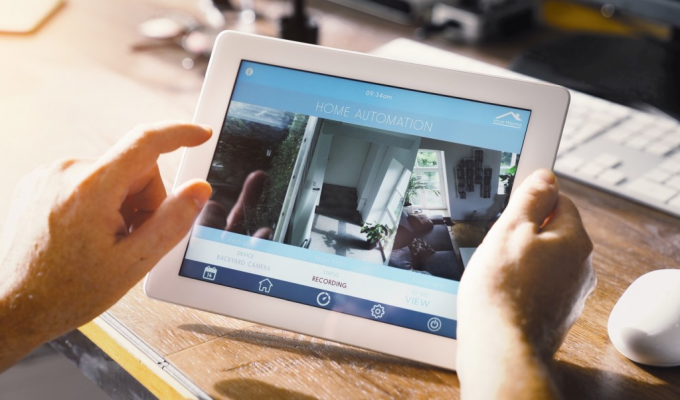Choosing what kind of remote innovation your new item should utilize can be a staggering assignment. Not exclusively are there a colossal number of remote designs at present accessible, but at the same time, it’s a moving objective with new advancements routinely being presented.
To help rearrange the way toward choosing the best remote tech for your item I’ve composed the different remote advances into bunches dependent on usefulness, information speed, and working reach.
Given the proposed usefulness of your item, it ought to be generally basic for you to promptly figure out which gathering of advances you have to consider.
For instance, on the off chance that you require two gadgets isolated by 30 feet to move low measures of information then it doesn’t bode well to utilize any of the significant distance or rapid remote advancements.
1. Peer-to-Peer Technologies
Peer-to-peer basically implies when two gadgets are associated together for direct correspondence. Just two devices can ordinarily partake in a shared association.
In the following area, I’ll talk about what are called work network advances which permit numerous gadgets to all to be interconnected.
1.1. Bluetooth Classic
The most popular distributed remote innovation is Bluetooth. At the point when you associate your telephone to a Bluetooth speaker that is a distributed remote association between your telephone and the speaker.
Bluetooth rules distributed streaming sound applications, for example, this Bluetooth headset.
Due to the moderately short working reach, Bluetooth is genuinely low force. It devours substantially less force than WiFi, and much not exactly cell advances, yet altogether more than advances, for example, Bluetooth Low-Energy or Zigbee.
1.2. WiFi Direct
Everybody thinks about WiFi, yet scarcely any individuals have known about WiFi Direct. This is genuine despite the fact that practically all telephones and tablets uphold it. Like Bluetooth, however dissimilar to conventional WiFi, WiFi Direct is a shared remote innovation.
As you likely definitely know, customary WiFi sets up a passageway that permits numerous gadgets to associate with it. However, imagine a scenario in which you need to move information legitimately starting with one gadget then onto the next without the overhead of a passageway. That is the place where WiFi Direct becomes possibly the most important factor.
WiFi Direct uses a similar fundamental innovation as customary WiFi. It utilizes similar recurrence and offers comparative transfer speed and speed. However, it doesn’t need a passageway, permitting two gadgets to have an immediate association like Bluetooth.
The upside of WiFi Direct over Bluetooth is for the most part quicker exchange speeds. Actually, WiFi Direct is over a hundred times quicker than Bluetooth. That speed includes some significant downfalls however and that cost is primarily higher force utilization.
1.3. Near-Field Communication
Close to handle correspondence (NFC) is essentially not the same as the different remote innovations talked about in this article. NFC imparts utilizing electromagnetic fields shared between two loops, while all different remote advancements produce radio waves.
Since NFC imparts through two loops that are electromagnetically coupled together, the working reach is just about an inch or two. The two coupled curls basically structure a transformer with an air center.
The most well-known use for NFC is in contactless installment frameworks. Despite the fact that installment information is obviously scrambled, the amazingly short working scope of NFC likewise assists with disposing of the chance of another person close by hacking the exchange.
2. Low-power / Short-range / Low-data Mesh Technologies
There are four regular advancements for making a low-power, low-information organization: Bluetooth Low-Energy, Zigbee, Z-Wave, and 6LoWPAN.
In the event that your item is battery worked, and needs to send moderately low measures of information a short separation away, at that point one of these four innovations is likely the best arrangement.
2.1. Zigbee
Z-Wave is an elite far off development (acquired by Silicon Labs in 2018) that fundamentally equals Zigbee and BLE in the home computerization market.
As opposed to BLE and Zigbee, which use the well known 2.4 GHz band, Z-Wave rather uses a sub-1GHz band. The particular band varies over various countries which can cause bothers in case you wish to sell your thing all around the globe. In the U.S., Z-Wave works at 908 MHz, while in Europe it uses 868 MHz. Various countries and locale use everything from 865 MHz to 921 MHz.
2.2. Z-Wave
Z-Wave is an exclusive remote innovation (procured by Silicon Labs in 2018) that basically rivals Zigbee and BLE in the home computerization market.
In contrast to BLE and Zigbee, which utilize the famous 2.4 GHz band, Z-Wave rather utilizes a sub-1GHz band. The specific band fluctuates across numerous nations which can cause inconveniences on the off chance that you wish to sell your item all around the world. In the U.S., Z-Wave works at 908 MHz, while in Europe it utilizes 868 MHz. Different nations and districts use everything from 865 MHz to 921 MHz.
There are two critical favorable circumstances of the lower transporter recurrence: expanded reach and diminished obstruction. Lower recurrence radio waves spread further. The 2.4 GHz band utilized by BLE and Zigbee is likewise utilized for WiFi, Bluetooth Classic, and even your microwave, so there is a great deal of potential for obstruction.
2.3. 6LoWPAN
6LoWPAN is an unusually named innovation that joins two distinct abbreviations. The 6 alludes to Internet Protocol (IP) variant 6 and the LoWPAN alludes to Low-control Wireless Personal sensor Area Network. Infectious name, I know.
6LoWPAN is basically another contender for Zigbee. The essential differentiator is that 6LoWPAN is an IP-based organization like WiFi. Likewise with Zigbee and Z-Wave, 6LoWPAN is principally utilized for home mechanization applications and brilliant meters.

Source: predictabledesigns.com
2.4. Local Area Network (LAN) Technologies
WiFi, maybe considerably more so than Bluetooth, likely requires little presentation. In the event that your item expects admittance to the web, and will consistently be utilized almost a WiFi passage, at that point WiFi is the appropriate response. WiFi is known as a Local Area Network (LAN) innovation because of its moderate inclusion territory.
WiFi is quick, modest, simple to actualize, has a decent working reach, and is broadly accessible. The greatest disadvantage of WiFi, in any event for versatile items, is the force utilization. On account of the more powerful utilization, you are generally in an ideal situation utilizing different remote advancements on the off chance that you don’t generally require the exhibition offered by WiFi.
3. Long-distance Cellular Technologies
On the off chance that your item needs admittance to the cloud, yet it won’t be reliably situated almost a WiFi passageway, at that point your item will probably require a cell radio for significant distance correspondence.
3.1. GSM / GPRS
For a long time GSM (Global System for Mobile communication) coupled with GPRS (General Packet Radio Service) for data transfer has been the most commonly used cellular technology for products that don’t require large amounts of data transfer. This is mainly due to the wide availability and the relatively low hardware cost of GSM/GPRS hardware.
Unfortunately, that is coming to an end. Most of the cellular carriers around the world are phasing out GSM so they can free up more bandwidth for 4G and 5G smart phones which require huge amounts of data transfer.
For a long time GSM (Global System for Mobile communication) coupled with GPRS (General Packet Radio Service) for data transfer has been the most commonly used cellular technology for products that don’t require large amounts of data transfer. This is mainly due to the wide availability and the relatively low hardware cost of GSM/GPRS hardware.
Unfortunately, that is coming to an end. Most of the cellular carriers around the world are phasing out GSM so they can free up more bandwidth for 4G and 5G smart phones which require huge amounts of data transfer.
3.2. LTE
LTE is a 4G cell innovation that upholds a lot quicker information speeds than GSM. In the event that your item requires exceptionally quick cell information transmission speeds, at that point LTE is likely the most ideal decision.
However, on the off chance that your item doesn’t generally need that degree of information speed, at that point you will be paying for equipment you just needn’t bother with. An inserted GSM module can be bought from China for a couple of dollars, while LTE modules can cost more than $20. The transporter administration cost for LTE will likewise be altogether higher than for GSM.
With the tremendous prevalence of Internet-of-Things (IoT) gadgets, this hole in innovation decisions has gotten significantly more articulated. This hole is currently being filled, however, by a few distinctive new remote innovations which I’ll talk about in the following area.
4. Low-power Long-distance Technologies
On the off chance that you require significant distance, low-information correspondence, as do numerous IoT items, at that point your innovation decisions aren’t as clear with respect to different applications. This kind of organization is generally alluded to as a LPWAN or Low-Power Wide Area Network.
For instance, if your item gathers climate information at far off areas and consequently transfers that information to the cloud, at that point a LPWAN innovation is likely required. As I’ve just called attention to, neither GSM or LTE cell advances are solid matches for low-information rate applications.
There are different remote innovations accessible that offer great answers for this issue, including LoRa, NB-IoT, and LTE-M. Sadly, none of these are broadly upheld worldwide norms. This makes their execution testing, or outlandish, for some, items relying upon where they will be sold.

Source: Freepik
4.1. LoRa / LoRaWAN
Lora (short for Long-Range) empowers extremely long-range correspondence of in excess of 6 miles in certain zones, while burning-through little force. It is an exclusive remote innovation obtained by Semtech in 2012.
Lora utilizes different recurrence groups relying upon the locale of activity. In North America 915 MHz is utilized, and in Europe the recurrence is 868 MHz. Different zones may likewise utilize 169 MHz and 433 MHz also.
Lora alludes to the hidden innovation and can be legitimately utilized for shared correspondences. LoRaWAN alludes to the upper layer organizing convention.
On the off chance that you are searching for a low-power, significant distance, shared arrangement, at that point LoRa is an extraordinary decision. You can commonly buy LoRa modules less expensive than LoRaWAN modules.
On the off chance that you wish for your item to interface with a current LoRaWAN organization, at that point a more costly LoRaWAN module is needed with the organization layer included. Tragically, LoRaWAN networks are just accessible in parts of Europe and not in North America. This seriously restricts the convenience of LoRaWAN for most items.
4.2. NB-IoT
Dissimilar to LoRa/LoRaWAN, NB-IoT is a cell innovation. This implies it is more intricate, more costly to actualize, and devours more force. Be that as it may, it offers more excellent cell associations and direct admittance to the web.
NB-IoT is just planned for sending modest quantities of information. The greatest drawback of NB-IOT is the restricted accessibility. No U.S. transporters uphold it yet, and it is as of now just being tried in Europe. Yet, it is required to open up in the U.S. at some point in 2019.
This innovation doesn’t almost certainly bode well to actualize in your item now, yet it will turn out to be more viable inside the following couple of years.
4.3. LTE-M
In the event that your item requires significant distance cell access with higher information rates than upheld by either LoRa or NB-IoT, at that point LTE-M might be your most ideal decision.
LTE-M is a shortening for LTE (Long Term Evolution) Cat-M1. This innovation is for Internet of Things gadgets that need to interface legitimately to a 4G portable organization. It is a subset of the LTE cell innovation that is upgraded for low information rate gadgets running from little batteries.
LTE-M varies from standard LTE in a couple of basic ways. To start with, it is less expensive to execute on the grounds that easier chips can be utilized because of the more restricted data transfer capacity.
Besides, it’s improved for diminished force utilization so as not to rapidly deplete little batteries. At long last, the cell administration costs are fundamentally lower since you aren’t utilizing anyplace close to the transfer speed needed by standard LTE.
4.4. Conclusion
The way to choosing a remote innovation is to limit your prerequisites so you can zero in solely on the practical advancements. The necessary working reach, the information transmission speed, the force utilization, and the expense are the essential standards for choosing a remote innovation.
Obviously, similarly as with everything in designing, you can’t have everything your way. For instance, an enormous working reach requires expanded force utilization. The equivalent is valid for quicker information rates. There will consistently be some give and take between these models. There will never be an ideal arrangement.
On the off chance that you are searching for an innovation that offers significant distance, low-power, high information speeds, and minimal effort, you will never locate a practical arrangement. All things considered, I recommend you organize your plan standards and start narrowing your decisions from that point.
Don’t see a smart solution that meets your specific needs?
If you would like to discuss more how to adopt smart solutions to your current business, feel free to drop us a message via info@daviteq.com


 Tiếng Việt
Tiếng Việt



